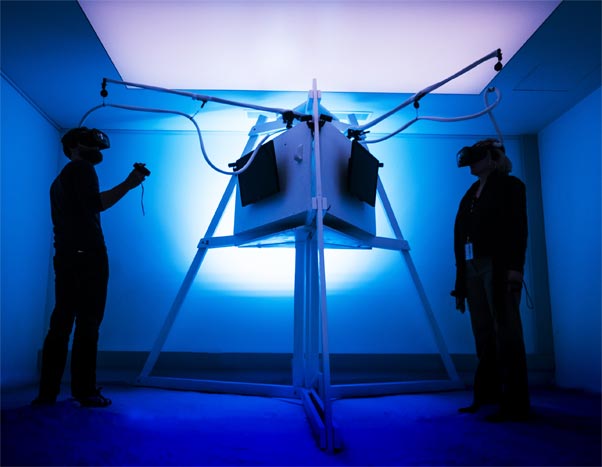5 Ways to Drive Marketing Success in AR and VR
The latest technology always brings intrigue and with it, interest. This is the reason why marketing should always stay on top of the latest tech trends. Speaking of the latest trends, we’ve seen really big waves by augmented reality and virtual reality, and with that, the emergence of augmented reality marketing and of course, virtual reality marketing.

Augmented and Virtual Reality in Marketing
While both technologies have already existed for quite some time now, their use in marketing efforts is still in its relative roots. That’s because we are only really starting to explore the various possibilities of their application in marketing.
We also believe that it is only a matter of time before everyone else regardless of the industry or scale follows suit.
Are AR Marketing and VR Marketing Accessible to the Average Consumer?
Here are some of the reasons why marketing experts were previously adamant to use AR and VR tech in their digital campaign strategies:
They didn’t immediately recognise their potential in marketing. Both technologies were previously assumed to be limited to gaming.
It is presumed as costly. Another common misconception is that both techs are costly since they require experts in the field and expensive equipment.
Augmented reality marketing and virtual marketing are not accessible to consumers. Finally, most marketing experts previously believed that even if they had the necessary investment to spare, it still wouldn’t be worth the effort since both augmented reality marketing and VR marketing are not accessible to the average consumer yet anyway.
However, these assumptions are certainly not the case. First, both technologies have a lot of applications in marketing as we are going to explore further down below.
Next, as both technologies expand, the resources required to provide AR and VR experiences become more affordable.
Lastly, to answer the question above, both techs are growing to become more accessible to the average consumer especially since a lot of their applications can be enjoyed through the use of smartphones.
One great example to prove the accessibility of augmented reality is the popularity of the mobile game, Pokemon GO by Niantic. In fact, the developers were able to generate $1 billion in the first ten months of 2020 alone.
The Advantages of Incorporating AR and VR Technology in Marketing
But what’s the buzz anyway? Here are the reasons behind the widespread interest in both technologies and their advantages when applied to your marketing efforts:
They provide an engaging experience. Since these technologies are still emerging, it is no surprise that most people are still excited to try them out. You don’t even have to persuade your consumers to do so and thus, can boost your consumer engagement significantly. If you’re looking into alternative ways on how to generate leads, then augmented reality marketing is certainly the way to go.
They can overcome the limits of physical reality. Both augmented and virtual reality can provide experiences that were previously impossible (or simply too costly) to provide. For instance, can you imagine providing actual pieces (or even physical replicas) of bigger products like furniture and appliances just so your consumers can see how it will fit or look in their home? Impossible, right? But with augmented reality marketing, not anymore. It can offer a digital version in place of a physical one, after all.
They also make it possible to provide more information in your marketing materials without the actual need of increasing their print size. Imagine being able to provide three pages worth of information through a business card that can simply be scanned through a mobile device.
It can reduce costs. In relation to the previous point, AR and VR tech can potentially remove the need for creating physical prototypes. Even a single digital product can be made accessible to millions through a smart and strategic application of these technologies.
Augmented Tours and Assistance
Two of the most popular ways to utilize AR and VR technologies are providing digital tours and improving customer assistance. Here are just some of the ideas on how they are being applied in various industries:
Real estate companies are using these techs to provide immersive tours of their properties anytime, anywhere.
Airline companies are now making it possible for consumers to look into their flight before booking it. Consumers will be able to check through their smartphone or tablet if there is enough legroom, how far the seats are from the windows, exits, or restrooms, and more.
Event companies can provide an immersive experience to their clients on how a venue will look like on the actual day, obtain feedback, and make adjustments on the fly if necessary. In fact, it is not impossible to recreate the experience of an actual physical event in a digital space. Their guests wouldn’t even have to leave the comforts of their home to attend and enjoy an event.
Consumers can say goodbye to confusing product manuals. Furniture stores and car companies are now exploring ways on how to provide detailed instruction on assembly or maintenance empowering self-service support.
Lastly, these technologies can also be utilised to provide detailed information to customer service agents giving them more insight into the issue and provide better assistance. The information gathered in AR experiences can also be applied in custom-tailoring marketing automation efforts.
Pepsi’s Trending Bus Stop
To end this article, we want to share with you one of the best examples of augmented reality marketing at its finest: Pepsi Max’s bus stop. The commuters of a London bus stop received a pleasant surprise, seeing almost realistic alien invasions, tentacle monsters grabbing pedestrians from a manhole, and more turning an otherwise boring and mundane experience into a memorable one一and all through an AR window. Just imagine how powerful augmented reality marketing can be in your future marketing efforts.
